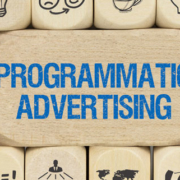The Top Reasons Why You Should Be Using Retargeting Ads
Just like in-person relationships, there’s a relationship between a business and its target audience. Would you rather go up to someone you’ve never talked to or have a conversation with someone who’s at least seen you around and knows you? Of course, you’d go with someone you’d already know.
Essentially that same concept can be applied to ad retargeting. With this digital marketing strategy, companies are able to bring back customers who have abandoned a product page or even checkout. These lists can also be used to show ads to new customers who have clicked on your ads but haven’t followed through with a purchase on your site.
Retargeting is a type of online advertising that recaptures interest from existing and returning customers. It’s also called remarketing, and there are a number of ways to use this strategy, including:
- Website retargeting
- Email retargeting
- Facebook retargeting
- Instagram retargeting
- LinkedIn retargeting
- Google Ads retargeting or RLSAs
It’s important to spend marketing dollars on those who are most likely to convert. Did you know that 70% of customers will likely convert through a retargeting ad? This is because retargeting delivers a specific message right to the consumer.
Here’s a little bit more about retargeting and how to use it for your brand.
Breaking Down Retargeting
Retargeting is an online advertising strategy where you target previous customers or visitors and invite them to come back to your site. Audiences are typically created from the following actions:
- Cart or checkout abandons
- Previous purchases
- Visiting a landing page
- Clicking on an ad via social media, search, or other display
- Email subscriber lists
- Product page abandonment
For example, let’s say a potential customer clicked on your ad that appeared on a Facebook timeline feed. They are taken to your landing page where they quickly browse a few products before leaving without completing a purchase.
Retargeting allows you to track these actions and also adds them to an audience list that you can use to show them a new ad later. These are retargeting ads that may have a special message such as “Come Back & Get 50% Off First Item” or a similar message tailored to their purchases. You can even use dynamic product ads to show specific items in the display ad that the visitor browsed before leaving to try and attract them back to your website.
Top Reasons to Use Ad Retargeting
Retargeting can lead to really high ROI when done correctly. All that’s needed is a strategy. Should you incorporate retargeting into your digital marketing campaigns? These are some reasons why millions of other businesses have used site retargeting in the past.
-
- Retarget cart abandoners: Customers aren’t always going to purchase what’s in their cart – in fact, a significant portion of your visitors most likely won’t. That’s why it’s important to be front and center with relevant ads after they leave.
- Higher CTR: Retargeting ads get 10x the CTR of display ads shown to new or blind audiences.
- Increased Conversion Rate: Retargeting has proven itself effective in increasing conversion rates over time.
- Reminds the customer: Sometimes you’ll forget to purchase – nearly 70% of all ecommerce shoppers abandon their cart.
Many companies report that retargeting works best through certain channels. While not all channels have the best ad network, some retargeting methods work better on Facebook and Google than others.
What Channels are Best for Retargeting
Did you know that you can display dynamic product ads to Facebook users that include pictures of the products they browsed before they left your site? This is a great example of how important it is to connect your marketing development team to Facebook, but that’s not the only channel where retargeting performs well.
Facebook and Instagram
Facebook allows you to create and save audiences that take action on your ads. Whether they clicked on an ad, shopped on your online store, or simply went to your Facebook page, you can create audiences grouping them together or separating them into three different segments.
If a Facebook user clicks on your ad but doesn’t act, you can also create an audience here. These are all available through the conversion tracking pixel on Facebook. Once you install this pixel on your website and landing pages, Facebook can track any action. You can then set up these audiences using tracking data from the pixel.
In addition, Facebook connects to Instagram, so you can retarget your customers directly where they are browsing.
Google RLSAs
Google has always had “remarketing” or retargeting ads. You can set up a conversion tracking pixel just like with Facebook and create audiences this way, or you can use email retargeting with Gmail ads.
However, Google RLSAs are a new way to use remarketing lists for search ads. This allows advertisers to tell Google to bid higher on customers who have already clicked on an ad or visited your website. This means that you can target a number of groups who will likely make a purchase, including:
- Existing customers
- Customers who purchased in the past 30-90 days
- Visitors who abandoned at checkout
- Visitors who browsed several pages but didn’t make it to checkout
You can also use these lists to exclude customers not likely to purchase again if they don’t respond or quickly bounce off the page.
Like Facebook and Instagram, Pinterest is another social network, but its claim to fame is that it uses only photos and links, which are called pins. These pins connect to a user’s boards, where they can save all of their favorite things. Pinterest allows you to track user’s activities and display ads to them when they meet your targeting criteria.
You can also use retargeting on the platform. Whenever anyone visits your board, likes a pin, saves a pin, or visits your website from Pinterest, you can create an audience and display ads on their feeds. These ads look like regular pins most of the time, but they can immediately capture a click and direct users to your website.
Creating a Site Retargeting Strategy and Tracking Setup
Retargeting companies use strategies that tend to be very complex. Landing pages, tracking and campaign creatives must all sync up to create the perfect blend of shopping motivation for your retargeted audience. They can be used to create loyalty programs with existing customers or even tailor the user journey based on audience interests.
Despite that, most businesses focus on abandons and recent purchases. By bringing customers back to the store, it’s easier to generate revenue. With smart website development, you could have retargeting and tracking built into your website already, as well as a strategy and campaign to bring in new revenue.
Ready To Start Retargeting?
Get started today with retargeting ads utilizing a digital marketing agency. Using proven strategies backed by data and research, increase your ROI with a retargeting strategy.
Contact us today for an initial consultation.




